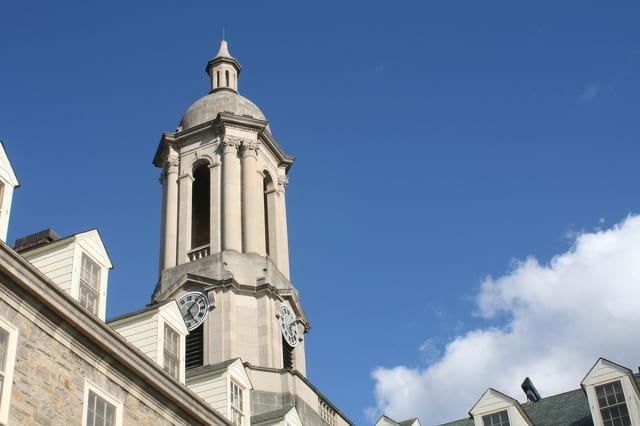Penn State will start its spring semester a bit later than usual, continue with a mix of instruction modes and cancel spring break, the university announced on Monday.
Classes will begin on Jan. 19, about a week later than normal, to provide more time for pre-arrival COVID-19 testing and quarantine, reduce the amount of time classes are in session during peak flu season and ‘create a buffer between New Year’s Eve and the start of the semester,” Penn State President Eric Barron said in a statement. The university will observe Martin Luther King Jr. Day on Jan. 18, when there will be no classes.
Canceling spring break, meanwhile, is meant to reduce the spread of COVID-19 through travel.
“The later start and the elimination of spring break are expected to reduce the possibilities for spreading the virus, and we again have the ability to pivot our instructional modes and operations if necessary,’ Barron said. ‘Faculty will have the option to choose their mode of instruction as long as it adheres to current health guidelines.”
Instruction will end on April 30 with final exams the week of May 3-7. Exams will be either in-person or online, depending on the course’s instruction mode.
Multiple instruction modes currently in place for the fall semester will continue in the spring. Those include regular in-person classes; mixed-mode, in which instructors use a combination of in-person and remote methods to maintain social distancing requirements; remote synchronous, with students attending all classes remotely at regularly scheduled times; and remote asynchronous, in which course material is made available online for students to work through on their own schedules.
Random surveillance testing for COVID-19 will continue until winter break and will restart in January, along with on-demand symptomatic testing.
Kelly Wolgast, director of Penn State’s COVID Operations Control Center, said the university is continuing to explore more testing options, including rapid diagnostic testing (RDT) technologies, as they become available.
“All of the mitigation efforts in place during the fall will continue to be in place in the spring, such as required wearing of face masks, social distancing, a prohibition on large gatherings, and both our random and on-demand testing,”Wolgast said. “Testing and contact tracing are critical components of our multi-layered, in-person strategies as they have allowed us to identify, track and proactively mitigate the cascading consequences of a positive COVID-19 result.”
As with the fall semester, students will be asked to self-quarantine for at least seven days prior to returning to campuses in January and certain students and employees returning from high-prevalence areas for the virus will be selected for mandatory pre-arrival COVID-19 testing.
The university is planning for a variety of other scenarios if circumstances or public health guidance change before the start of the semester in January.
‘We have learned much with our summer and fall semesters and while we recognize that we continue to operate amid great uncertainty, it was the consensus of the committee that these measures, along with reduction in travel through the elimination of what is traditionally spring break, would lessen the impact of COVID-19,” Provost Nick Jones said.
“We know that we best achieve our educational mission when we can engage fully with our students, whether in-person or through remote instruction. All of the instructional modes are focused on supporting students and accommodating their needs. The spring plan is a continuation of the best of what has been done to date, enhanced tremendously by experience and what we have learned.”
The window for course scheduling has been adjusted and students should check LionPATH to determine the date they can begin scheduling courses. A schedule of courses will be available Oct. 15, with registration for graduate students beginning Nov. 1 and for undergraduates on Nov. 2.
Additional information about spring semester will be announced as plans are finalized.
“I certainly understand it is uncomfortable to live with ambiguity and I am as eager as everyone else to return to some measure of normal activities,’ Jones said. Our ability to do that in the future relies on everyone’s cooperation in protecting ourselves and those around us by continuing to follow CDC guidance on wearing face coverings, maintaining a physical distance from others, washing your hands frequently and avoiding large gatherings. We also are strongly encouraging everyone to receive a seasonal flu vaccine this year and right about now is a good time.”



